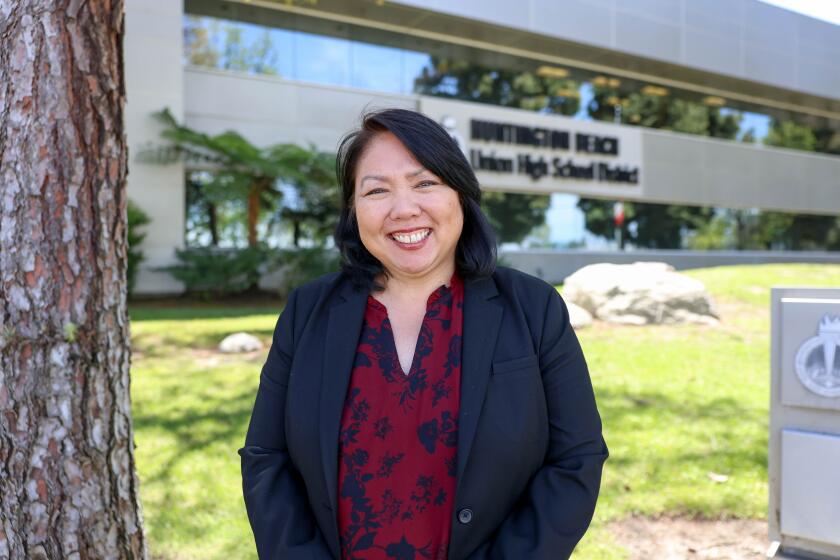Water district aiming for full independence
Editor’s note: This corrects the timeline for the Colored Water Treatment facility upgrade and the precentage of ground water sustained.
COSTA MESA — A motorist driving down Placentia Avenue might not look twice at the nondescript concrete warehouse and compact administrative offices of the Mesa Consolidated Water District.
Little does he know that on the western side of Placentia, between 19th and 20th streets, some 10 million gallons of water are constantly circulating and surging behind the steel and concrete walls of Costa Mesa’s first reservoir.
Built in 1990 during some of the worst droughts in California history, the reservoir was part of Mesa’s Master Plan to end a dependency on water imported from neighboring cities and states.
“The longterm water supply plan is to make Mesa completely independent from unreliable imported water,” said Shawn Dewane, president of the board of directors. “We will be the only water agency in the county that is 100% drought-proof. What that means is that even in times of drought we are able to pump an unlimited amount of water from our supply to meet the demands of the citizens.”
Mesa is nearing that goal as it closes in on its 50th anniversary celebration Wednesday, Dewane said.
The pièce de résistance of the plan will be an industry-leading filtration technology that will upgrade the Colored Water Treatment facility beginning in January and will be fully in use by mid-2012.
The new technology, called nanofiltration, features an ultra-fine filter capable of catching the carbon molecules responsible for creating the harmless amber color found in groundwater.
The project should more than double the amount of water treated while reducing energy use and costs by about a third, said Mesa General Manager Paul Shoenberger.
It’s leaps and bounds from the methods of early settlers to “treat” the tea-colored water. The remains of an ancient redwood forest some 1,300 feet beneath the city give the natural groundwater its sulfuric odor and unpleasant color.
Affectionately referred to as “redwood tea” by board members, the untreated water is safe to drink and was served by restaurants to early settlers in tinted glasses to disguise the color, said Art Goddard, a historian with the Costa Mesa Historical Society.
Early distribution systems also lacked today’s ability to maintain constant water pressure vital to daily functions, such as cleaning and cooking, and vital emergency response situations, Dewane said.
The automatic computer systems monitoring Mesa Water’s nine wells and 350 miles of concrete and steel pipeline have come a long way from the 65-foot upright stand pipes (the weight of the water maintained pressure) and redwood pipes used early in the 20th century.
“You can imagine those pipes were very leaky,” Dewane said of the wood plank pipes, which had an appearance and structure similar to that of a wine barrel.
The history of Mesa, which was formed in 1960 from four separate pre-existing agencies, paces alongside the development of Costa Mesa. Within a decade, the first construction was beginning on South Coast Plaza and the San Diego (405) Freeway.
“Historically, the communities around here that provided centralized water grew and thrived,” Goddard said. “The one community which we know didn’t have centralized water, failed. And that was the boom town of Fairview, and that shows you how important water is.”
While the turn-of-the-century town of Fairview didn’t last, Costa Mesa doubled its population in the early years of the water district and continues to grow, according to the district.
Increasing environmental awareness, an emphasis on cost and energy efficiency and a constantly growing consumer base have pointed Mesa to push to becoming “drought-proof.”
Currently at about 92% groundwater sustained, only a small portion of the water is imported from outside sources.
Dewane said Mesa will be up to 100% self-reliant — with the new nanofiltration technology writing a new chapter in the district’s history book.
“The citizens that have supported the district up and through its evolution to today are going to be well-rewarded for that in the future,” Dewane said. “Water is going to be a more and more contentious issue going forward.”
All the latest on Orange County from Orange County.
Get our free TimesOC newsletter.
You may occasionally receive promotional content from the Daily Pilot.



